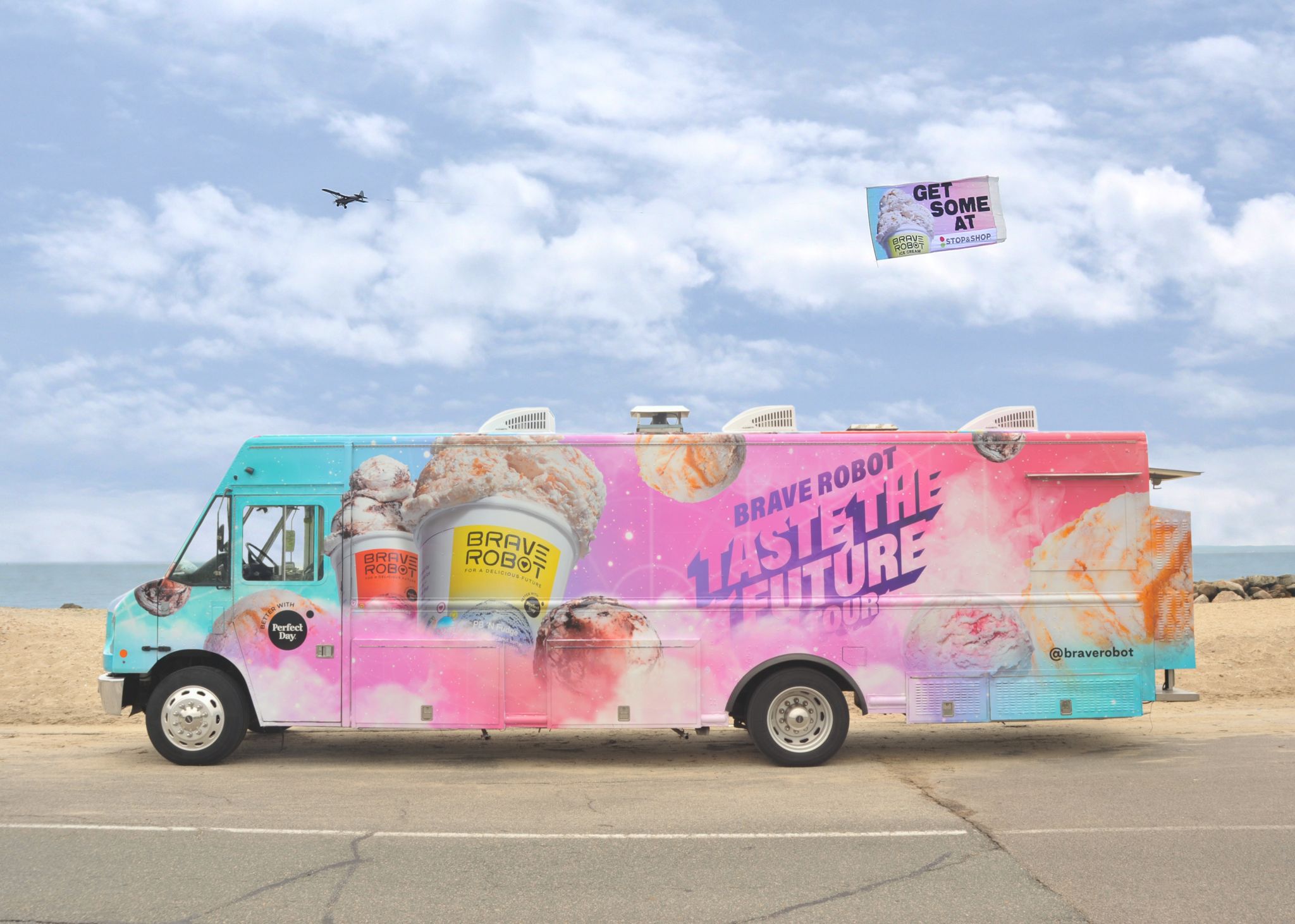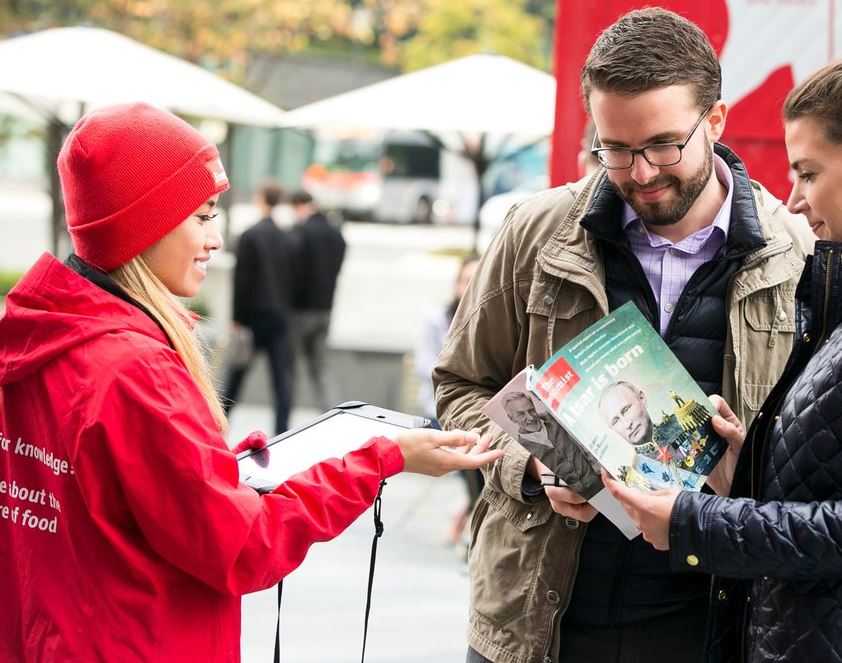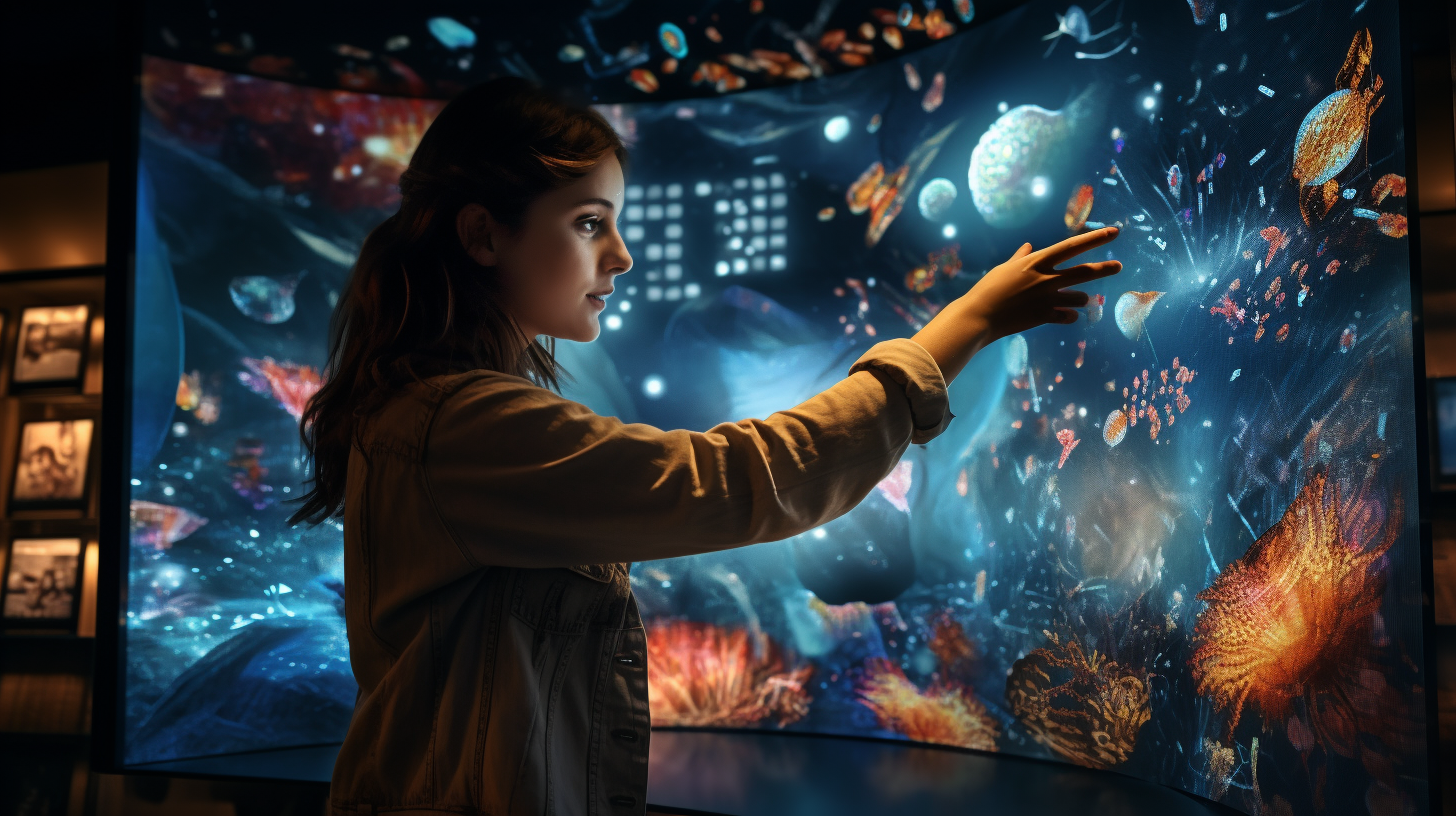
- Immersive Experiences
Awaken Your Senses – Navigating Sensory Experiences
Sensory experiences are a powerful way to create a closer bond between your consumer and your brand by immersing them in a fun and memorable experience. These experiences rely on our senses – sight, sound, smell, taste, and touch – to form connections and experiences that help consumers relate to the brand on a personal level.
Here’s how each sense can be utilized in an experiential marketing campaign:
Sight
The most commonly utilized sense in marketing, sight can be used to draw consumers in through attractive visuals, compelling design, interesting color schemes, and innovative displays. An example could be a pop-up store with visually striking design elements that resonate with the brand identity.
Brand Aesthetics and Visual Identity
Your brands visual identity is of paramount importance. Elements like your logo, color scheme, typography, and overall design style all play a role in how the brand is perceived. For instance, a tech company might use sleek, modern design elements to underscore its focus on innovation, while a children’s brand might employ bright colors and playful shapes to communicate fun and creativity.
Interactive Visual Displays
Interactive displays are another way to use sight in an experiential marketing campaign. This could involve anything from a digital touchscreen that allows customers to customize a product, to a larger-than-life billboard that changes based on audience interaction providing an exciting visual element.
Visual Storytelling
Experiential marketing campaigns often use sight to create an immersive world that tells a story. For instance, a travel company might create a pop-up event that visually replicates a famous location, allowing customers to “travel” without leaving their city. These experiences often extend beyond simple visual appeal to create a multi-dimensional environment that consumers can interact with.
Social Media Integration
The visual component is crucial for social media sharing. Many brands aim to create “Instagrammable” moments that customers will want to share on their social media profiles, effectively giving the brand free advertising. This could be a visually striking backdrop, a cool piece of brand-centric art, or a unique visual experience, like a light show.
All these elements using sight in experiential marketing aim to create a memorable, shareable visual experience that resonates with your audience.
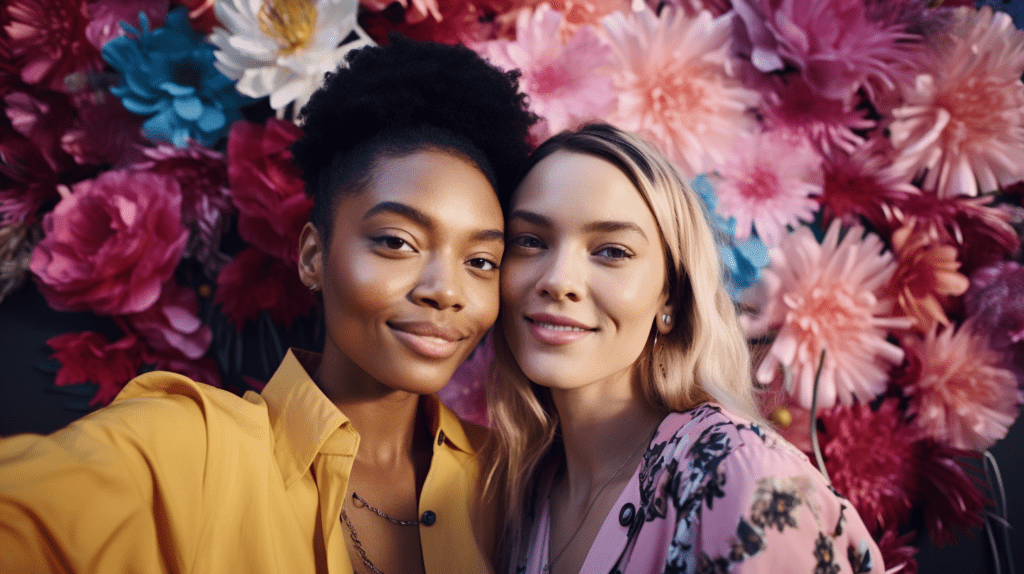

Sound
Sound can create a powerful emotional response. Using music, ambient sounds, or even silence strategically can impact the mood of the consumer experience. Think of a car company using the distinct sound of their newest engine roaring in a showroom event. Here’s a few other ideas on how sound can be integrated into your campaigns:
Soundtracks and Music
Background music or a particular soundtrack can set the mood and tone of an event or experience. Whether it’s an energetic pop song at a product launch, calming ambient sounds at a wellness event, or live performances at a festival sponsored by a brand, the auditory experience can strongly influence how customers perceive the brand.
Branded Sounds
Known as “audio branding” or “sonic branding”, this involves creating a unique sound or jingle associated with the brand. Examples include the ‘Intel Inside’ bong, or the Netflix “Ta-dum” sound. These sonic logos, when used in the context of an experiential marketing campaign, can reinforce brand recognition and recall.
Sound Effects
These can be used to augment the experience, often in sync with other sensory experiences. For instance, a travel company promoting a beach holiday might use the sound of waves lapping against the shore.
Voice
Whether it’s a live presenter, a brand ambassador, or a voice-over in a multimedia presentation, the human voice can be a powerful tool for creating an emotional connection with consumers. The choice of voice – including the accent, tone, and speech style – can say a lot about the brand’s identity and values.
Interactive Sound
Interactive sound installations can create a participatory experience for customers, such as a soundboard that lets visitors create their own music, or an installation that reacts to voices or movements with sound. This adds an element of play and personalization to the experience.
Silence
Interestingly, strategic use of silence can also have a powerful impact. In a world that’s often filled with noise, a quiet space or a moment of silence can make a strong statement and provide a contrast that heightens the impact of the sounds you do use.
The effective use of sound in experiential marketing can add depth to the customer experience.
Smell
Smell is a powerful sense that is closely linked to memory and emotion, which can make it a highly effective tool in experiential marketing campaigns. Here’s how the sense of smell can be utilized:
Brand Scents
Just like visual logos or sounds, some brands develop a distinctive scent that becomes a part of their identity. For example, many luxury hotels use specific scents in their lobbies and rooms to create a unique and consistent experience for their guests.
Thematic Scents
If a brand is trying to evoke a specific theme or location, they might use relevant scents to create a more immersive experience. For example, a travel company might use the scent of sea air and coconut to transport potential customers to a tropical beach, or a home goods store might use autumnal scents like cinnamon and apple to promote their fall collection.
Mood-Evoking Scents
Certain scents can evoke particular moods or feelings. Lavender is often associated with relaxation, citrus with energy and freshness, and vanilla with comfort. Brands can use these associations to create a certain mood or evoke desired emotions during an event or experience.
The goal of scent marketing is to create a thoughtful, subtle and pleasant sensory experience. Overpowering scents can be off-putting and have the opposite intended effect.
Taste
For food and beverage brands, the sense of taste can be quite directly involved in the marketing campaign. But even for other brands, offering uniquely branded refreshments during a brand event can leave a lasting impression. For instance, a company might launch a new product and host a launch party featuring a specially crafted cocktail or a unique treat that captures the product’s theme.
Product Sampling
This is perhaps the most common way taste is used in marketing. For food and beverage brands, providing samples of their products allows customers to experience the taste directly. This can be in a store, at a festival, or any event where the brand is present.
Themed Food and Beverages
For brands that don’t directly deal with consumable products, they can still use taste in their marketing campaigns by providing themed food and drinks at their events. For instance, a fashion brand might serve cocktails that match the colors of their latest collection during a launch event.
Interactive Tasting
Making tasting an interactive experience can also be very effective. For instance, a winery might host a wine blending session, where participants can create their own unique blend, or a food brand might set up a create-your-own-flavor station at an event.
Collaborations with Culinary Experts
Brands can also collaborate with chefs or food experts to create unique recipes using their products. This not only showcases the product in a different light but also gives consumers ideas on how they can use the product. Promobile Marketing has collaborated with many brands from product launches, to pop-up shops, to mobile food truck tours where they used their culinary expertise to create exquisite menus for each experiential marketing campaign.
Limited Edition or Seasonal Flavors
Launching a limited edition flavor that matches the theme of the campaign or the season is another common tactic. This generates excitement and urgency, as customers know the product won’t be available forever.
When integrating taste into experiential marketing campaigns, it’s crucial to maintain a clear link between the tasting experience and the brand or product.
Touch
The tactile sensation can be a powerful way to engage consumers. Whether it’s the texture of a product, interactive displays, or even the handshake of a company representative, physical touch can create a strong connection. Here are some ways in which touch can be utilized in such campaigns:
Product Interaction
Allowing customers to physically interact with a product is one of the most direct uses of touch in marketing. This could involve trying on clothes, handling a tech gadget, or feeling the texture of a fabric or material. This type of hands-on experience can greatly influence a customer’s decision to purchase a product.
Interactive Displays
Interactive displays that respond to touch can engage customers in a fun and immersive way. This could involve touchscreens that allow customers to customize a product, navigate a digital environment, or play a game.
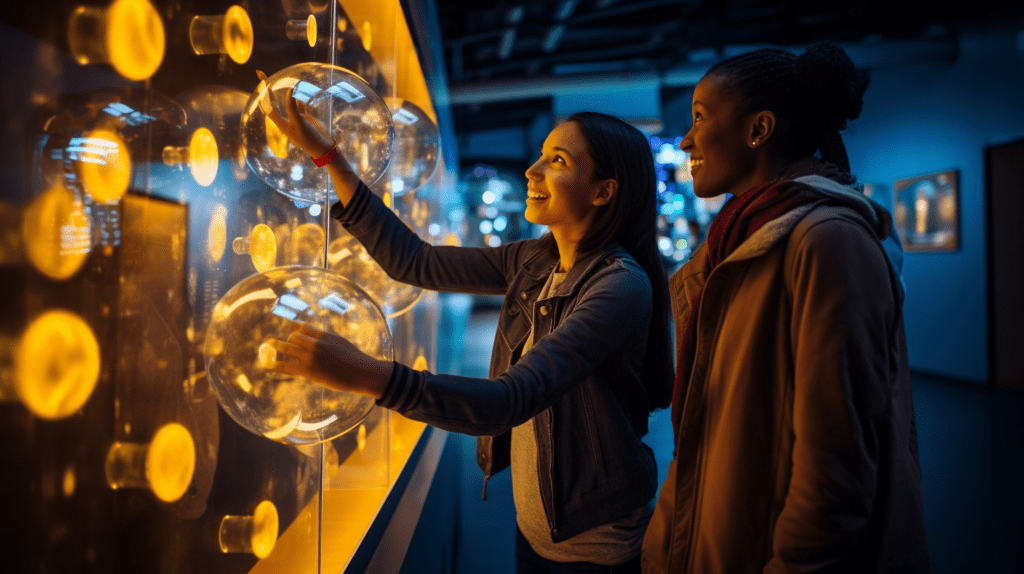

Materials and Finishes
The choice of materials and finishes can greatly influence a customer’s perception of a brand. For example, a brand that prides itself on luxury might use high-quality materials with a variety of textures in their stores or at their events.
Temperature and Vibration
More subtle forms of touch include the use of temperature or vibration. For instance, a warm welcome handshake, or a car seat that heats or cools to the optimal temperature during a test drive can all create memorable tactile experiences.
Workshops and Demonstrations
Hosting workshops or demonstrations where customers get to create something with their own hands can create a deeper connection with a product or brand. This could involve a DIY skincare product workshop by a beauty brand, or a pottery demonstration at a craft store.
Overall, the use of touch in experiential marketing can create a more engaging and immersive experience for customers.
Multi Sensory Brand Experiences
When planning experiential marketing campaigns, consider incorporating multiple senses. Creating a multi-sensory experience can significantly enhance the overall impact of the campaign and create a deeper, more memorable connection with consumers. Here’s how brands can leverage multiple senses:
Themed Events or Pop-Ups
A themed event or pop-up shops offers an ideal opportunity to engage multiple senses. For instance, a coffee brand might create a pop-up store where customers can see the coffee being brewed (sight), smell the aroma of the coffee (smell), hear the sounds of the coffee machine and the ambient sounds of a coffee shop (sound), taste the different types of coffee available (taste), and touch the packaging or coffee beans (touch).
Product Launches
During a product launch, a brand can plan activities that stimulate multiple senses. For example, a tech company unveiling a new smartphone might visually demonstrate its features (sight), allow attendees to handle the device (touch), use specific sounds or music to generate excitement (sound), and offer refreshments that tie into the theme of the launch (taste and smell).
Mobile Tours
Mobile tours, both local and nation-wide, can significantly enhance multi-sensory brand experiences. These tours allow brands to physically reach their audiences in various locations, enabling them to create immersive, real-world experiences that engage multiple senses.
For instance, a food brand may organize a mobile tour with a food truck that visits different cities. At each stop, consumers can see, smell, and taste the food products, while hearing brand messages or music, creating a comprehensive sensory experience. By integrating sight, sound, touch, taste, and smell, mobile tours provide a tangible and memorable way to connect consumers with your brand in their own environment.
Retail Sampling
Retail sampling campaigns offer a powerful opportunity to create a multi-sensory brand experience right at the point of purchase. By offering samples of a product, brands can engage consumers’ senses of taste and smell directly. The visual presentation of the sample, whether it’s elegantly plated food or a beautifully packaged mini product, engages the sense of sight. Brands can also use touch, such as the texture of a lotion sample or the feel of a fabric swatch. Even sound can play a part, whether it’s the sound of a product being made, the sizzle of food cooking, or a brand ambassador explaining the product features. By combining these sensory experiences, retail sampling campaigns can not only introduce consumers to a product, but also create an emotional connection and memorable experience that enhances the overall perception of the brand.
It’s important to remember, however, that while multi-sensory experiences can be very effective, they need to be well thought out and carefully executed. Overloading the senses can confuse or overwhelm consumers, resulting in a negative experience. The key is to create a balanced and harmonious sensory experience that resonates with the brand’s identity and values. Contact Us for your next product launch, pop-up shops, retail sampling campaign, or local or nation-wide mobile tours.
Promobile Marketing is a dynamic experiential marketing agency based in New York City. For over a decade, Promobile Marketing has collaborated with a range of brands—from budding startups to major CPG brands—on immersive marketing campaigns. Get in touch to discuss your next project.
